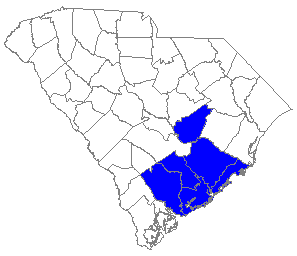 |
 

 |



Twin-spot Skipper (Oligoria maculata [W. H. Edwards])
Wing span: 1 3/8 - 1 5/8 inches (3.5 - 4.2 cm).
Identification: Wings are rounded and brown-black. Upperside of forewing has 4 transparent spots. Underside of hindwing has a pale red-brown overlay and 3 oval white spots, 2 of which are close together.
Life history: Not reported.
Flight: Two broods from April-September, possibly three broods in Florida.
Caterpillar hosts: Grasses.
Adult food: Nectar including that from pickerelweed flowers.
Habitat: Coastal swamps and pinewoods.
Range: Coastal North Carolina south through Florida and west along the Gulf Coast to east Texas. A rare stray to Pennsylvania, Maryland, and New Jersey.
Conservation: Not usually required.
The Nature Conservancy Global Rank: G5 - Demonstrably secure globally, though it may be quite rare in parts of its range, especially at the periphery.
Management needs: None reported.
References:
Opler, P. A. and G. O. Krizek. 1984. Butterflies east of the Great Plains. Johns
Hopkins University Press, Baltimore. 294 pages, 54 color plates.
Opler, P. A. and V. Malikul. 1992. A field guide to eastern butterflies. Peterson
field guide #4. Houghton-Mifflin Co., Boston. 396 pages, 48 color plates.
Scott, J. A. 1986. The butterflies of North America. Stanford University Press,
Stanford, Calif. 583 pages, 64 color plates.
Author: Jane M. Struttmann
State and Regional References:
Layberry, R.A., Hall, P.W. & Lafontaine, D.J., 1998. The Butterflies of
Canada. University of Toronto Press, Toronto, ON. 280 pp.
Opler, P.A. 1998. A field guide to eastern butterflies, revised format.
Houghton Mifflin Co., Boston.

